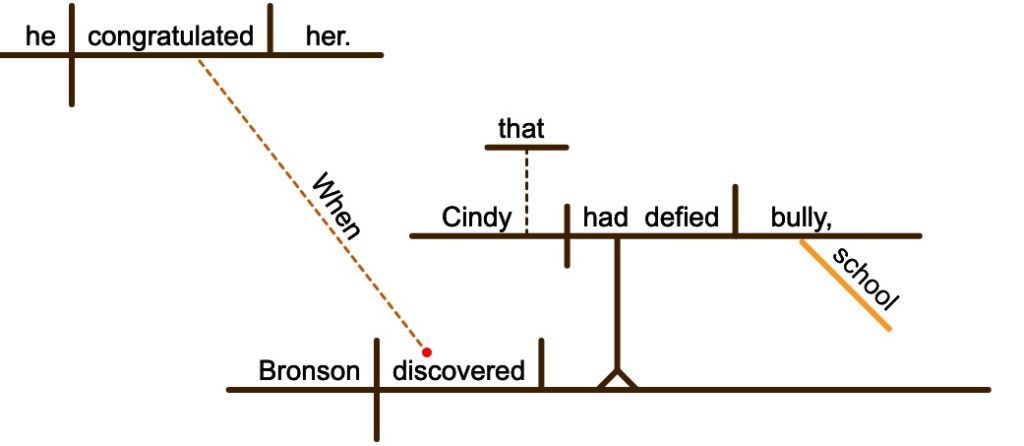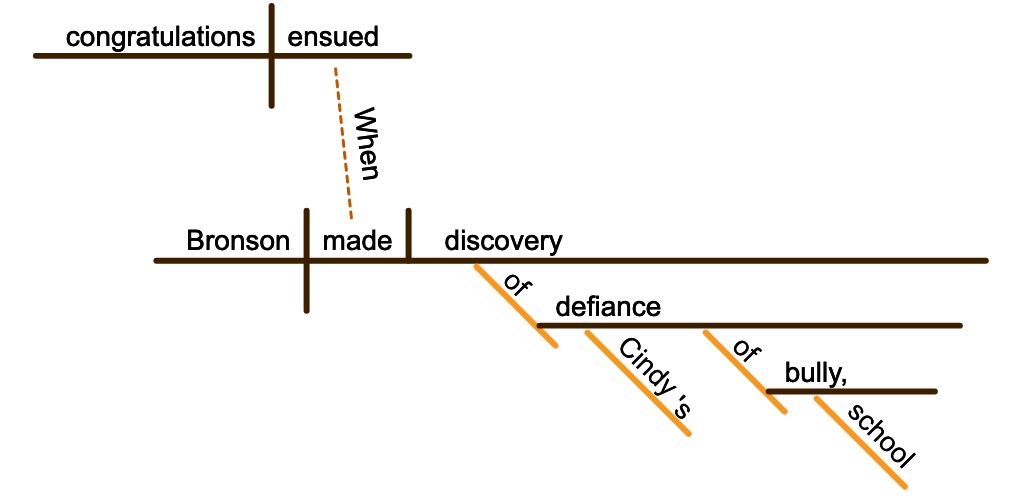Here’s a quick tip that can improve your writing almost immediately: for every sentence you write, make sure you can say where the real action is. What are the actions and who are the actors. Who is doing what? Then, make it your default to express the actions as verbs and the actors as the subjects of those verbs.
If this advice seems self-evident, it’s not. True, we all learn that verbs are action words, but the subject-verb nexus is only one of many ways that the English language allows us to communicate action. (Consider the fact that the word action is not a verb but a noun). I am not insisting that you always express actions as verbs and actors and subjects, only that you make it your habit to compose your sentences that way unless you have a reason not to.
The two most common ways of breaking the actor-action/subject-verb rule are the passive voice and nominalization. In an earlier edition of The Habit I have written at length about passive voice, which moves the actor out of the subject spot. But I don’t think I have given a full explanation of nominalization.
Nominalization is the practice of turning a verb into an abstract noun. This noun can serve the same functions within a sentence that any other noun could serve. In nominalization, the verb defy becomes the noun defiance. The verb discover becomes the noun discovery. It’s not hard to see how nominalization can cause a sentence to float off into the realm of the abstract.
Let’s look at a couple of sentences that illustrate these ideas. First, here’s a straightforward sentence in which the grammar aligns with the action:
When Bronson discovered that Cindy had defied the school bully, he congratulated her.
There are three actions in this sentence:
- Bronson discovered something.
- Cindy defied the school bully.
- Bronson congratulated Cindy.
Notice that each of these three actions is expressed as a verb, and the actor of each action is expressed as the subject of a verb (Bronson discovered, Cindy defied, Bronson congratulated).

Here is a sentence in which those same three actions are expressed in a more nominalized form:
When Bronson made the discovery of Cindy’s defiance of the school bully, congratulations ensued.
The actions haven’t changed: Bronson is still discovering something, Cindy is still defying the school bully, and Bronson is still congratulating Cindy. But the verbs are no longer where the action is. The verbs are made and ensued. The subjects of those verbs are Bronson and congratulations.
The mismatch between verbs and actions is even more obvious in this sentence diagram:

There’s a lot of drama in this sentence. But the subject-verb nexus of the main clause, as you can see, is congratulations ensued. Neither Bronson nor Cindy appears in that main clause. And Cindy, the real hero of the story, the one who stood up to the school bully, has become a modifier of the abstract noun defiance. This is the kind of thing that happens all the time when you start nominalizing verbs. Also, notice that two prepositional phrases have wormed their way into the sentence. When writing instructors tell writers to get rid of prepositional phrases, this is exactly the kind of prepositional phrase they’re talking about. When you get rid of the nominalization, the prepositional phrases go away of their own accord.
Let’s have one more look at these two sentences one after the other:
Sentence 1
When Bronson discovered that Cindy had defied the school bully, he congratulated her.
Sentence 2
When Bronson made the discovery of Cindy’s defiance of the school bully, congratulations ensued.
Here’s something interesting: if you were asked the difference between these two sentences, you might say the second one is too wordy. You wouldn’t be wrong. It definitely feels wordy. But if you actually count the words, you see that the second sentence, the nominalized one, is only one word longer than the first. Sentence 1 is thirteen words long; Sentence 2 is fourteen words long.
It’s hard to believe isn’t it? The real difference is this: In Sentence 1, information comes to you in the way it comes to you in the world God made. Images come to the sensory part of your brain. You see a little story with actors and actions. Sentence 2 engages the cerebral part of your brain rather than the sensory part. Sure, the reader can figure out what is happening. But why should the reader have to figure it out?
It seems odd to say it, but you don’t want your readers to have to think too much. Rather, you want them to save their mental energy for when you really need them to think. You don’t want to waste it.
However, as I often say, every problematic grammatical structure exists because sometimes it’s exactly what you need. Let’s look at another nominalized sentence, one that isn’t nearly so egregious as that last one.
Mark’s failure to stop at the intersection was the cause of the car crash.
In this sentence, the subjects and verbs are not at all aligned with the action. There’s a whole lot of action in this sentence: It’s a car crash! Mark is running a red light. Mark is careening into another car. Metal is crumpling. Glass is flying. Babies are crying. Dogs are barking. But there is only one verb in that sentence, and it’s a pretty disappointing one under the circumstances: was.
Here’s the diagram:

How might you rewrite this sentence so that the subjects and verbs align with the action? Here are two of many options:
Mark failed to stop at the intersection and crashed into another car.
Mark ran through a red light and crashed into another car.
Are those better sentences than the original nominalized version? It depends on the context doesn’t it? It’s not at all hard to imagine a situation in which the best sentence is the one we started with: “Mark’s failure to stop at the intersection was the cause of the crash.” Maybe one of Mark’s defenders has said, “Foggy conditions were the cause of the car crash,” and you say, “Hardly! Mark’s failure to stop at the intersection was the cause of the car crash.”
I encourage writers to follow the actor-action/subject-verb rule because readers are always asking, “Who did what?” But who did what isn’t the only important question you’re answering when you write. Sometimes other questions come to the foreground. WHY did something happen? In the case of Mark and the car crash, we are answering the question WHO is to blame?
When you compose a sentence, you are trying to make the structure of the sentence match up with the deeper logic of that sentence. Straightforward action is a great place to start because in the real world, information tends to come to us as action. We see a car run a red light. We see that car crash into another car. And then our judgment kicks in. We say, “Hey, that jerk just caused an accident by running that red light.” Data comes to us through our eyes or our other senses, and we make judgments based on that data. We don’t have a narrator in our head telling us what to think about what we see.
Nominalization, on the other hand, tends to move things out of the realm of actors and actions and into the realm of more abstract relationships. Let’s look one more time at the diagram of our first, nominalized sentence about Mark’s car crash:

The main line of that sentence is failure was cause. That grammar expresses cause and effect, which is a logical relationship. The sentence structure foregrounds the logical relationship that is at play here.
The more “verbish” version—”Mark ran through the intersection and hit another car” (or something similar)—lets readers make the cause-and-effect connection for themselves, lets them pass judgment on Mark as a driver. Which, again, is how our experience of the world usually works.
But the nominalized version—Mark’s failure was the cause…—that version says to the reader, Here’s the conclusion I want you to reach here. Sometimes telling your readers what conclusion you want them to reach is a good thing, and sometimes it’s a bad thing.
I do think writers tend to err on the side of telling readers what to think rather than inviting them into a scene and pointing them in the right direction. That’s why I persist in my campaign to get writers to treat the actor-action/subject-verb model as their default and to use nominalization only if they have a good reason. But as we have seen with Mark and his horrible driving record, there are certainly situations when it’s appropriate to use nominalization to direct your reader to a specific conclusion.
Grammar isn’t just grammar. Sentence structure speaks to deeper logical structures.







